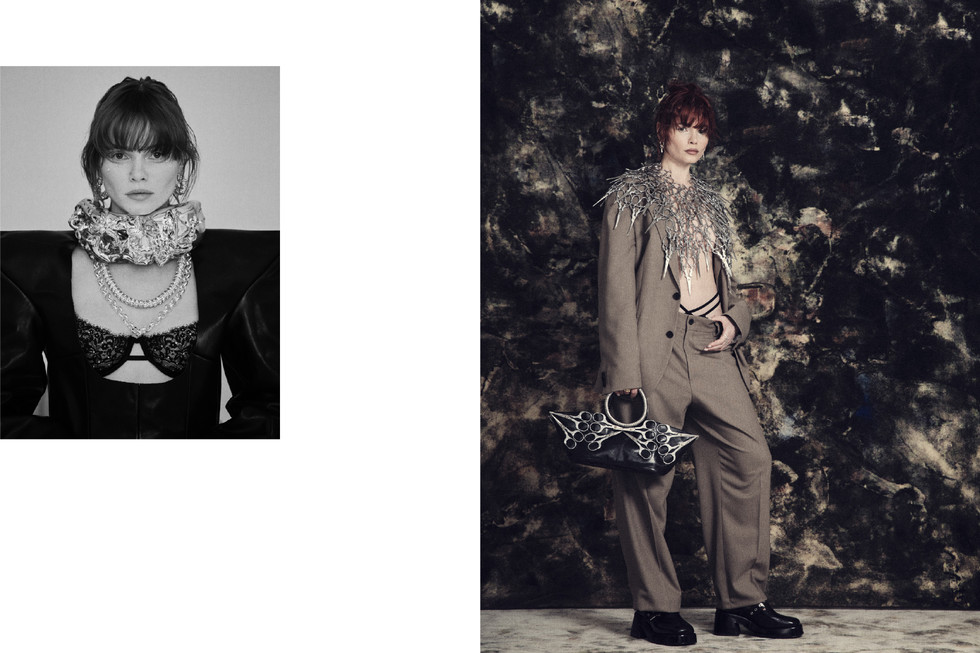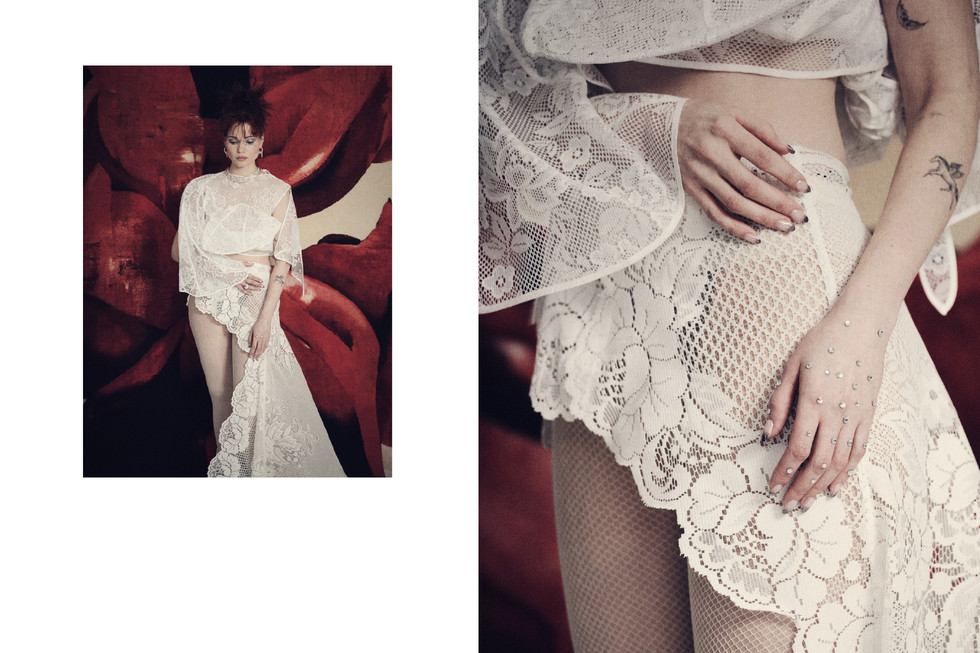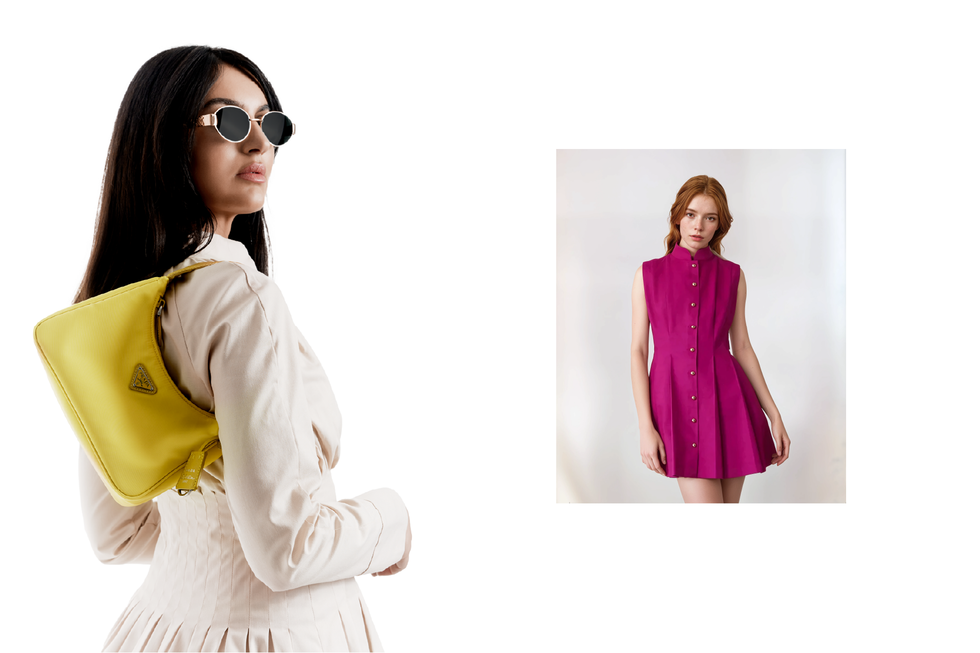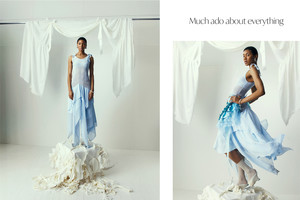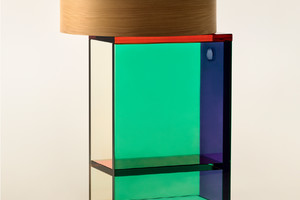Carolinne B. - jewellery with a roar
Written by Natalia MunteanAlligators, koi fish, and wolves are all animals that inhabit Caroline Barholm's creative universe. Since founding her eponymous jewellery brand, Carolinne B, in 2014, she has transformed wild inspiration into rings, bangles, and pendants, each piece a tribute to what nature has to offer.
“I love design, and I love nature. Jewellery became the bridge between the two,” says Carolinne. “When I saw how deeply people connected with my pieces, I knew there was something special here.”
Blending bold aesthetics with lasting craftsmanship, her work resists fast fashion, instead embracing sustainability and storytelling. Through its wearable art with teeth, wings, and claws, Carolinne B. proves that elegance need not play it safe.
NM: I'm curious if there was a specific moment or experience that influenced your designs and your decision to go into that niche.
Carolinne B: I like animals and nature. You can always find inspiration in nature, whether it’s a butterfly wing or patterns in the environment. It started with one animal, then another, developing a theme around nature or branches.
NM: What was the first animal you created?
Carolinne B: It was a lioness, a bangle. I still have that one. After the lioness, I created alligators.
NM: I noticed that the names of your collections are so interesting, like Love Bites and Up North. How do you come up with them?
Carolinne B: I want them to be a bit witty and fun. The names represent little icons of nature, like ants, bees, and butterflies. They capture the essence of those creatures.
NM: I read that you mentioned jewellery doesn't need to play it safe to be timeless. How do you balance the boldness of your jewellery with ensuring it remains elegant and timeless?
Carolinne B: I'm not chasing fast fashion or seasonal drops; I focus on thoughtful growth. I stick to an animal theme, which resonates with people. I create jewellery that’s meaningful and symbolic. Material choice is central for me; I use timeless materials like silver and aim to work more with solid gold. If a piece lasts, it becomes timeless. I also focus on using long-lasting materials like diamonds and gemstones.
NM: Now that we've shifted a little bit into the materials, I know sustainability is a core value for your brand. What challenges have you faced in trying to source recycled materials and maintain an eco-conscious production cycle? With the fast trends in the world today, I assume this is a challenge.
Carolinne B: It's a big challenge. I've not been working with gemstones or diamonds because I can't relate to that world; I know how dirty it is with diamonds and mining and all of those gemstones. I found upcycled diamonds and gemstones that I buy from auctions and pre-owned pieces, from which I can take the gemstones and diamonds. It became another thing for me because now I can use them. I think it's okay now because I don't mind, and I'm not part of that world that I can't stand for. It's crucial for me because I work with an animal theme and a nature theme, and I can't go against it, even though I love gemstones and diamonds. It’s a crucial and big part. Ensuring quality can be challenging. When I buy from auctions, sometimes I can’t trace the origin. They have people who check and assess the quality, so I often get good quality, but tracing the provenance can be an issue. However, instead of extracting new materials, I prefer to use pieces that are already cherished or worn. Diamonds are forever.
NM: That's also in a poetic way. You give them a different or new story, and that's something beautiful about it. From what I understand, each piece is handmade in Stockholm. Is it you who does it, or do you have a team? Can you walk me through the journey of creating a piece?
Carolinne B: It starts with me. I begin with sketches. I'm not great at drawing, but I can sketch what I want to do. From there, I work with someone who helps me with CAD printing. When we're done, I go to a place in Stockholm that moulds it together with me. After that, we create a prototype, also in Stockholm, and we cast it here. I don't do the casting anymore because it's too much time-wise. Everything is done here in Stockholm.
NM: I saw that your jewellery has been worn by Alba August, Tove Lo, and Princess Sophia. That's really cool! Have you noticed what kind of audience it attracts?
Carolinne B: I think my typical customer is a woman between 25 and 45, but I try to make pieces that appeal to anyone who likes nature, animals, or handmade and locally made items. I hope to reach a wide range, from teenagers to grandmothers, especially those who appreciate storytelling and craftsmanship.
NM: And have you noticed if there is a piece or collection that is more popular?
Carolinne B: The little nature icons, like the bees and butterflies, are particularly popular. Otherwise, I can't really see a trend in which pieces are preferred. I don't have seasonal drops, so the things I made in 2014 are still in my shop.
NM: How has your brand evolved since 2014?
Carolinne B: It’s been evolving very slowly, but it's the way that I wanted to evolve. I try to put a lot of emotions in every collection I drop, and that's how I want it. I want to work towards more quality and more high-end pieces with solid gold and gemstones.
NM: And if you could design a fantasy collection with no limits, what would it be, and what would it look like?
Carolinne B: It could be a lot of different gemstones and diamonds. I love working with green gemstones, and hopefully, I will have a collection with frogs, for example, in the future, where I think emeralds would be a perfect fit. So, more diamonds and emeralds.
NM: That sounds lovely. Do you have any rituals when you go into the studio?
Carolinne B: I know I'm a very hectic person, so I tend to work better when I'm stressed. Although it's not the healthiest approach, having a lot of tasks to complete often sparks new ideas for me. So, in that sense, it's beneficial for my creativity. However, I don't have any specific rituals. When I have a lot on my plate, new ideas just come to me.
NM: You've been doing this for 11 years now. What advice would you give yourself, looking back or to someone starting a brand in this field?
Carolinne B: Well, I think it would be not to think about other people’s opinions so much. Just go with it and do your thing and trust your gut and believe in yourself. Don't listen to people. Listen to yourself.
NM: Where do you see the brand going in the next five years?
Carolinne B: I see us moving towards more high-end pieces. I would love to expand into wedding and wedding jewellery, particularly with designs inspired by nature and animals. Hopefully, we will have more high-end pieces.





